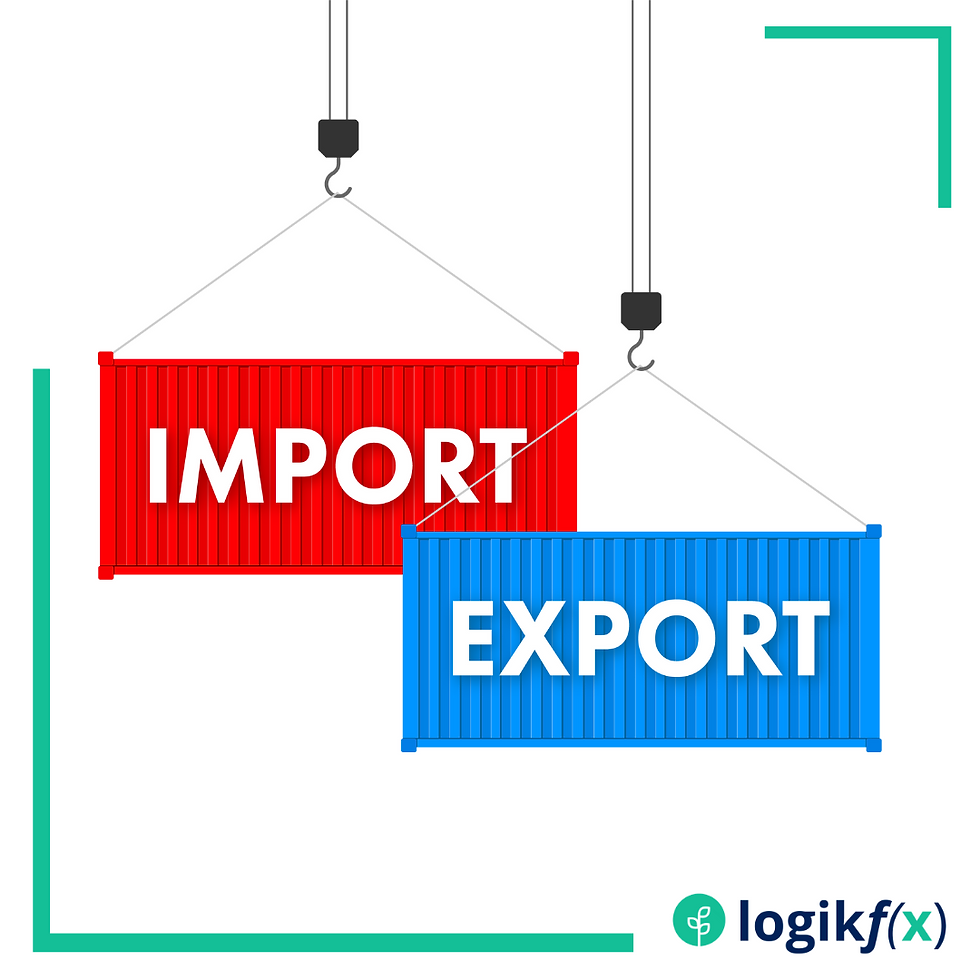Understanding the Balance of Trade (BOT)
- Marcus Raiyat
- Aug 6, 2024
- 2 min read
The Balance of Trade (BOT) is a vital economic indicator that provides insights into a country’s economic health by measuring the difference between its exports and imports over a specific period. This metric is crucial for understanding how a nation interacts with the global economy.
In this article, we'll delve into the definition of the Balance of Trade, explore its workings with real-world examples, and explain how to calculate it. We’ll also compare BOT with the Balance of Payments (BOP) to provide a comprehensive understanding of these economic concepts.

What is the Balance of Trade?
Definition and Importance
The Balance of Trade (BOT) is the difference between a country's exports and imports for a given period. It is the largest component of a country's Balance of Payments (BOP) and serves as a critical measure of a nation's economic strength. A positive BOT (trade surplus) indicates that a country exports more than it imports, while a negative BOT (trade deficit) shows the opposite.

How Does the Balance of Trade Work?
Mechanisms of BOT
The BOT is generally calculated on a monthly basis by individual countries, although it can also be measured for a group of countries, such as the European Union, over a longer period like a year. The value of goods exported from the United Kingdom was over 94 billion British pounds in the first quarter of 2024, compared with 136.2 billion pounds worth of goods imported, resulting in a goods trade deficit of around 42.2 billion pounds.
Example: Balance of Trade United States vs. China
The trade relationship between the United States and China provides an excellent example of contrasting trade policies:
United States: The US has been running consistent trade deficits since 1976, primarily due to high imports of oil and consumer products. Despite this, the US economy has experienced significant growth, with trade liberalisation efforts increasing American real incomes by 9% since World War II.
China: In contrast, China has maintained significant trade surpluses since 1995. From 2004 to 2009, China’s trade surpluses increased tenfold. Despite their differing trade policies, both nations have competed economically, with China's management of COVID-19 predicted to make it the world's largest economy by 2028.
Calculating the Balance of Trade
The Calculation Formula
The formula to calculate the Balance of Trade is straightforward:
BOT=Value of Exports−Value of Imports
Exports (Ev): The value of goods and services sold to other countries.
Imports (Iv): The value of goods and services purchased from other countries.
Balance of Trade vs. Balance of Payments
Understanding the Differences
While the Balance of Trade focuses solely on the trade of goods and services, the Balance of Payments (BOP) provides a broader picture by including the BOT, the balance of services, unilateral transfers, and the capital account. The BOP helps track all financial flows into and out of a country, ensuring that everything is accounted for, including foreign exchange inflows and outflows.
Forex Trading with Logikfx
At Logikfx, we provide advanced tools and resources to help you navigate the complexities of forex trading. Our platform offers detailed technical and fundamental analysis, educational content, and expert insights to aid in developing effective trading strategies. Whether you’re a novice or an experienced trader, Logikfx is dedicated to supporting your financial journey. Join our community today to start making informed and strategic trading decisions.


Comments